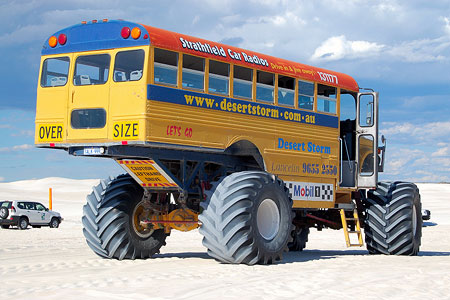We've bandied this topic around before, but here's more grist for the mill. As many people know, the crash safety ratings for individual cars are only valid for comparison between cars of the same size, it is not possible to use the ratings to determine the relative safety of models in different size categories.
The Insurance Institute for Highway Safety has now run some crash tests between the small cars and larger cars of the same brand.
Toyota: Camry (3680 lbs, 189"L) vs Yaris (2326 lbs, 169"L)
Honda: Accord (3433 lbs, 194"L) vs Fit (2520 lbs, 162"L)
Mercedes: C-Class (3560 lbs, 182.3"L) vs Smart for Two (1852 Lbs, 106"L)
In all cases, the smaller cars were rated "good" within their class, but all rated "poor" (the lowest IIHS rating) when crashed into these larger vehicles.
There's still no quantitative way to compare the risk between cars of various sizes, but it is fairly clear that a larger, heavier car offers considerable safety advantages. The "larger car" in these tests wasn't a jacked-up SUV or a pickup carrying a ton of bricks--just a typical family sedan, and they really tore up the smaller cars.
A video showing the crashes and giving some setup/narration
A WSJ article on the same topic (sorry--might require a subscription)
Here's a link to the IIHS web site. Some snippets:
The Insurance Institute for Highway Safety has now run some crash tests between the small cars and larger cars of the same brand.
Toyota: Camry (3680 lbs, 189"L) vs Yaris (2326 lbs, 169"L)
Honda: Accord (3433 lbs, 194"L) vs Fit (2520 lbs, 162"L)
Mercedes: C-Class (3560 lbs, 182.3"L) vs Smart for Two (1852 Lbs, 106"L)
In all cases, the smaller cars were rated "good" within their class, but all rated "poor" (the lowest IIHS rating) when crashed into these larger vehicles.
There's still no quantitative way to compare the risk between cars of various sizes, but it is fairly clear that a larger, heavier car offers considerable safety advantages. The "larger car" in these tests wasn't a jacked-up SUV or a pickup carrying a ton of bricks--just a typical family sedan, and they really tore up the smaller cars.
A video showing the crashes and giving some setup/narration
A WSJ article on the same topic (sorry--might require a subscription)
Here's a link to the IIHS web site. Some snippets:
Crash statistics confirm this. The death rate in 1-3-year-old minicars in multiple-vehicle crashes during 2007 was almost twice as high as the rate in very large cars.
I'm with Brewer--when I shop for a new(er) car, I'll probably start my search with cars weighing at least 3000 lbs.Though much safer than they were a few years ago, minicars as a group do a comparatively poor job of protecting people in crashes, simply because they're smaller and lighter," Lund says. "In collisions with bigger vehicles, the forces acting on the smaller ones are higher, and there's less distance from the front of a small car to the occupant compartment to 'ride down' the impact. These and other factors increase injury likelihood." The death rate per million 1-3-year-old minis in single-vehicle crashes during 2007 was 35 compared with 11 per million for very large cars. Even in midsize cars, the death rate in single-vehicle crashes was 17 percent lower than in minicars.



